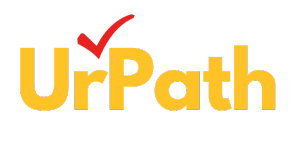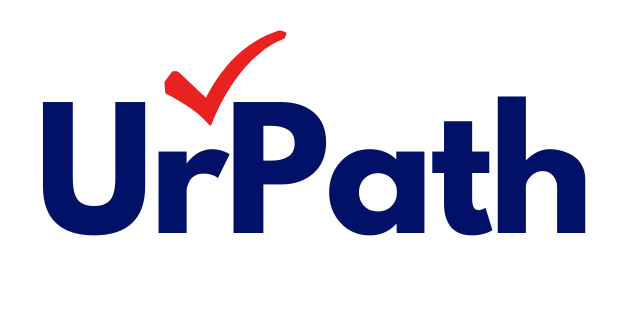Blog Layout
Mastering Omnichannel Marketing for Higher Education: A Strategic Approach to Competitive Student Recruitment
Hayoung Kim • November 4, 2024
Book Your Free Initial Consultation Today
Introduction: The New Era of Student Recruitment

In an increasingly competitive landscape, where higher education institutions vie for the attention of a limited pool of students, the demand for a strategic, student-centric approach to recruitment has never been greater. Decision-makers like presidents, chancellors, and directors of recruitment face rising pressure to increase enrollment and diversify student demographics. To meet these demands, institutions must adopt an omnichannel marketing strategy—one that integrates both online and offline engagement channels into a unified approach that nurtures prospective students from awareness to enrollment.
In this blog article, we explore how higher education institutions can leverage omnichannel marketing to win in this competitive landscape, the essential components of a successful omnichannel approach, and actionable strategies to enhance recruitment results.
What is Omnichannel Marketing in Higher Education?
Omnichannel marketing is more than simply using multiple channels for communication; it’s about creating a cohesive and seamless experience across all student touchpoints. This approach ensures that a prospective student’s journey—from initial discovery to enrollment—is unified and consistent, regardless of the platform or interaction.
For higher education, an omnichannel strategy includes digital channels like social media, email, SEO, and PPC, as well as traditional methods like direct mail, campus events, and high school visits. The goal is to engage students with relevant, personalized content at every stage of their decision-making process.
While omni-channel marketing focuses on the student experience by integrating multiple channels to create a seamless and personalized experience across all touchpoints, integrated marketing focuses on the message by coordinating different channels and tactics to deliver a consistent brand message. While omnichannel and integrated marketing are separate strategies, they can be used together to create powerful experiences for prospective students.
Why Higher Education Institutions Need Integrated, Omnichannel Marketing
As digital transformation reshapes how students research and select institutions, the recruitment landscape has become fiercely competitive. Students now expect the same level of personalization and responsiveness from universities as they do from consumer brands. Missing these expectations can result in lost opportunities, especially given the rise of alternative educational paths.
Institutions that effectively adopt integrated, omnichannel marketing can:
- Increase Engagement: Personalized outreach across channels boosts student engagement, making prospective students more likely to choose the institution.
- Improve Conversion Rates: By nurturing leads through a seamless experience, institutions can improve application completion rates.
- Build Brand Loyalty: A consistent, well-executed integrated strategy builds long-term loyalty and advocacy, even among students who ultimately choose different institutions.
Components of a Successful Omnichannel Strategy
A well-rounded omnichannel strategy encompasses several essential components tailored to address the complex student decision-making journey.
1. Understanding the Student Persona
Developing a comprehensive understanding of prospective students is foundational. By examining demographics, psychographics, and behavioral data, institutions can create detailed buyer personas representations of ideal students based on audience and market research. These personas enable targeted communication that resonates with students’ goals, values, and concerns.
During Hayoung’s time at Kaplan International, maintaining and refining student personas was an ongoing priority. She and her team consistently revisited and updated these personas to ensure alignment with Kaplan’s tuition structure and to effectively reach the right groups of prospective students. This process demanded a close focus on student needs and demographics; for example, when targeting English language programs, they frequently examined specific regions where students required additional language support and fit within certain income brackets.
Collaboration was also essential in this role. Hayoung worked closely with the Sales Development Representative (SDR) team, regularly discussing the effectiveness of targeting strategies. By analyzing prospective students’ responses to calls and emails, the team ensured their approach resonated with the intended audience. This feedback loop with the SDR team allowed for continuous refinement, helping them reach students who were not only a good fit for Kaplan’s programs but also more likely to engage with outreach efforts positively.
At Kaplan, Hayoung approached the development of buyer personas with a data-driven mindset, using insights from marketing automation tools, Google Analytics, and social media platforms. Each landing page was crafted to resonate with its specific audience, informed by ongoing analysis of who visited which pages and what content resonated most. This approach enabled precise alignment of messaging and content with audience needs and interests.
For instance, Hayoung’s team avoided promoting English language programs tailored for older professionals to younger European students seeking post-college adventure. To prevent mismatches, each landing page was designed with the target audience in mind, using SEO-friendly language that reflected their preferences and search behaviors. This personalized approach ensured that every page connected meaningfully with the right audience, ultimately maximizing both engagement and conversion rates.
2. Data-Driven Decision Making
Data analytics is crucial for tracking prospective students’ behaviors and adjusting strategies accordingly. Higher education institutions can analyze data from website visits, social media interactions, and open rates on emails to optimize targeting efforts and understand which channels drive the highest engagement.
Data-driven decision-making is essential for marketing teams because it helps maximize ROI and ensures that marketing budgets are spent effectively. In our experience, working with data has shown how crucial it is to track every campaign accurately and understand the performance of each marketing channel.
At one organization where Hayoung worked, the absence of a Marketing Operations (MOps) team often led to challenges in tracking campaign performance, and the marketing team lacked sufficient training in lead generation monitoring. This gap meant that they couldn’t consistently identify which channels or campaigns were yielding results, resulting in inefficiencies in budget allocation.
In contrast, Hayoung and Stephanie’s experience at Coursera highlighted the importance of data-driven marketing processes and having skilled teams in place. Both organizations were equipped with robust CRM systems and well-trained MOps and Demand Generation teams. Every landing page and campaign utilized UTM tags as a standard practice, and their CRM systems were configured to analyze the performance of each marketing channel. This setup allowed our team to determine which channels generated the most leads, which produced qualified MQLs, and the precise spend per channel. With this data, our team could strategically allocate marketing dollars in the channels with the highest ROI and continuously refine our approach to ensure the most effective message reached our intended audiences.
3. Digital Marketing Integration
Digital channels such as SEO, SEM, email marketing, and social media provide the foundation of a robust omnichannel approach. Together, they create a comprehensive online presence that captures prospective students’ attention and reinforces brand messaging. Search engine optimization and PPC ads can help increase visibility at key points in students’ search process, while social media offers a platform for interactive engagement.
At Kaplan International, digital marketing integration was central to their marketing team's approach, particularly through the use of robust retargeting ads. The team saw excellent responses to these ads, with noticeably higher engagement and conversion rates among students who had previously visited the website or interacted with the brand. Retargeting allowed Kaplan International to maintain visibility with these students throughout their decision-making process.
A key part of Hayoung’s strategy involved A/B testing various retargeting ad formats. One particularly successful test involved displaying ads with a tuition discount, where the actual tuition amount was clearly stated. This transparency helped attract students with a serious interest, resulting in a higher conversion rate. In contrast, ads without the tuition amount often brought in leads of lower quality; the Sales team frequently noted that these students were less responsive to follow-up efforts. By including the discounted tuition amount, the team not only achieved lead targets but also improved the quality of interactions in the pipeline, which the Sales team appreciated for its impact on recruitment success.
4. Website Optimization and Content Marketing
Content plays a crucial role in omnichannel marketing. Higher education institutions must maintain a content-rich website that is easy to navigate and provides valuable information such as program outcomes, career prospects, and campus life details. Blog posts, program guides, and video testimonials can further establish authority and help prospective students feel more connected to the institution.
A crucial issue I often see in higher education institutions is the lack of understanding around website optimization and its impact on prospective students. Many institutions overlook that students typically spend only 4-5 seconds on a website, meaning they need to capture interest immediately. The real question becomes: what are these institutions offering that students will value in that brief interaction? How clearly is the institution showcasing the ROI and employability outcomes that students are increasingly demanding?
During Hayoung’s time at Burning Glass Technologies (now Lightcast, following its merger with EMSI and Lightcast), a leading provider of SaaS products for higher education institutions focused on labor market analysis, she noticed a growing concern among institutions. Many schools were struggling to attract enough students, as prospective applicants had become increasingly cautious about investing in education that might not lead to strong employment opportunities or justify tuition costs. In discussions with these institutions, Hayoung observed that students wanted assurance of the value they would gain and a clear pathway from education to employment.
Following these discussions, Hayoung often reviewed the institutions’ websites, only to find that many landing pages lacked critical information about the skills and outcomes students could expect. Few sites addressed career prospects, earning potential, or specific job titles linked to their programs.
However, NC State University’s Continuing and Lifelong Education department stood out as an exemplary case. Their landing pages effectively detailed course descriptions, employment trends, median wages, career profiles, and specific skills students would acquire, along with job titles associated with those skills. NC State had clearly attuned its content to meet prospective students’ informational needs, setting a high standard for institutions. This approach demonstrated how institutions could thrive by addressing both the skills students would gain and the tangible outcomes they could expect after graduation.
5. Traditional Media Integration
Traditional media—like direct mail, on-campus events, and educational fairs—remains an effective way to complement digital efforts. Sending personalized brochures to interested students or hosting open days on campus can solidify interest and provide a tangible experience that digital channels cannot.
Traditional media integration in higher education involves strategically combining offline methods with digital marketing to create a unified message and seamless experience for prospective students. This approach allows institutions to connect with students at multiple touchpoints, reinforcing digital messaging in ways that foster deeper engagement and provide a tangible connection to the institution.
For example, personalized direct mail campaigns can reinforce digital ads that students may have seen online. If a student has recently browsed a program on the institution’s website, a well-timed brochure or postcard about that program can arrive at their home, reinforcing their interest and prompting them to take the next step. These materials can also provide unique content that complements online resources, such as detailed course guides or invitations to program-specific webinars.
On-campus events and open houses are also crucial in integrating traditional media with digital efforts. Prospective students can be encouraged to attend these events through email invitations and social media promotions, while follow-up direct mail can thank attendees and provide further program details or application reminders. Similarly, at educational fairs, institutions can collect prospective students’ contact information and then integrate this data into their CRM, enabling personalized digital follow-ups, such as emails tailored to the students' specific areas of interest.
By integrating traditional media with digital channels, institutions can create a cohesive recruitment journey that engages students through multiple formats, reinforcing brand messaging and enhancing the likelihood of conversion.
While working for Navitas, Hayoung traveled globally to recruit international students, where traditional media integration was a key part of her recruitment strategy. She collaborated with local agencies to promote offline events through targeted digital marketing, ensuring that students were informed and motivated to attend. At these events, Hayoung typically interacted with 30-40 prospective students daily, with around 10-15 engaging in meaningful, extended conversations about the university partners she was representing.
To effectively capture these interactions, Hayoung used Marketo landing pages for sign-ups and recorded personalized lead notes for each student. This approach enabled her to follow up with tailored emails after the event, creating a welcoming and valued experience for each student. This blend of in-person engagement and personalized digital follow-up proved highly effective, significantly enhancing conversion rates. Hayoung’s approach earned her recognition within Navitas as one of the top marketers, consistently meeting her targets. By integrating digital marketing to drive attendance at offline events and employing customized follow-up messaging, she contributed to a more impactful recruitment strategy that strengthened both student engagement and conversion.
6. Leveraging Technology for Personalization
Customer relationship management (CRM) systems, marketing automation, and AI-powered tools enable institutions to personalize communications based on each prospect’s preferences and behavior. Personalized email campaigns, for example, can be timed to follow a prospect’s website visit, guiding them back to complete an application or learn more about a program.
CRM systems are essential for higher education institutions as they allow marketing teams to capture and analyze data accurately, creating a foundation for meaningful and personalized communication with prospective students. With a robust CRM, institutions can track student engagement across different channels, identify interests, and then tailor messages based on each student’s behavior and preferences. This precision makes CRM a powerful tool for guiding students along the decision-making journey, from initial inquiry to application completion.
An important element that enhances CRM capabilities in digital marketing is the correct setup of cookies. Cookies are critical for tracking a prospect’s interactions with a website, capturing data on page visits, clicks, and time spent on specific sections. This data enables marketing teams to understand where a student is in their journey and then send targeted messaging, such as retargeting ads or follow-up emails. Without properly set cookies, institutions miss out on valuable insights and may find it challenging to reach the right audience with the right message at the right time.
In essence, cookies work as digital markers that ensure students see content aligned with their interests, leading to a more personalized experience. Proper cookie management also allows for retargeting ads—crucial for maintaining visibility with students who have shown interest but may not have completed an application. When cookies are enabled, these students can be reminded of the institution’s programs through relevant ads as they continue browsing online, keeping the institution top-of-mind. Together, CRM systems and correctly managed cookies form the backbone of an effective, personalized digital marketing strategy that increases engagement and drives conversions.
Challenges in Implementing Omnichannel Strategies
Adopting an omnichannel strategy isn’t without challenges. Budget constraints, coordination issues between departments, and the need to implement and maintain advanced technologies can make it difficult to create a seamless experience. Leaders need to prioritize alignment among recruitment, marketing, and admissions teams to ensure consistent messaging and coordinated outreach efforts.
Benefits of Omnichannel Strategies for Higher Education Institutions
Institutions that successfully implement an omnichannel marketing strategy stand to gain significant advantages, such as:
- Stronger Student Relationships: By engaging students through personalized, relevant content across multiple channels, institutions can foster meaningful connections that result in higher enrollment rates.
- Increased Application Rates: Consistent, targeted engagement helps students progress through the application funnel, increasing the likelihood of completed applications.
- Improved Targeting and Conversion Rates: Omnichannel strategies enable institutions to reach the right group of students based on their interests and behaviors, leading to higher conversion rates as messaging resonates with prospective students' specific needs.
- Improved Return on Investment (ROI): Omnichannel marketing often yields higher engagement and application rates, maximizing marketing budgets and increasing ROI.
Conclusion
Omnichannel marketing represents a powerful tool in the competitive student recruitment landscape. By investing in a strategic, data-driven approach, institutions can enhance student engagement, improve application rates, and boost enrollment numbers.
For higher education leaders ready to take their recruitment efforts to the next level, our marketing agency offers specialized expertise in creating and executing omnichannel strategies tailored to meet enrollment goals. Contact UrPath today to explore how we can help your institution navigate the complexities of student recruitment with an integrated, omnichannel approach.
To learn more about integrated campaigns, read our blog: How to Orchestrate Integrated B2B Campaigns
Got Any Questions?

By Hayoung Kim
•
November 14, 2024
Unlock the full potential of webinars as a versatile tool in your B2B marketing strategy. From showcasing your product to launching and discussing new eBooks or whitepapers, sharing thought leadership insights, and highlighting customer success stories, webinars offer endless opportunities. Whether you’re looking to drive brand awareness, engage your target audience, or generate qualified leads, this step-by-step guide—based on my extensive experience—will help you create impactful and effective webinars that deliver results.

By Stephanie Wu
•
November 7, 2024
A successful omnichannel strategy requires careful planning and continuous optimization. Here are the key steps: 1. Evaluate and Define Goals Start by setting clear objectives that align with the institution's overarching goals, such as increasing inquiries, boosting application numbers, or driving enrollments. From my experience working at Google’s Growth Lab, I learned the importance of identifying a North Star Metric— a single, most critical indicator that best represents the success of the product or offering. Establish supporting KPIs to track performance along the way, ensuring that all activities contribute to the North Star Metric. Setting quarterly OKRs (Objectives and Key Results) and measuring progress against them provides a focused direction for the strategy and enables continuous alignment with institutional objectives. 2. Conduct Market and Competitor Research To build a truly effective omnichannel strategy, it’s essential to conduct thorough market and competitor research that goes beyond examining similarly ranked institutions. Start by evaluating competitor strategies and analyzing student expectations to identify unique opportunities and differentiators. Competitor research should be approached holistically—your competitors are not only institutions with a similar ranking or academic focus but also those offering unique engagement strategies or programs that attract your target demographics, even if their core offerings differ. Look closely at the marketing channels, messaging, and engagement tactics other institutions are using, whether they share your academic profile or not. For example, a specialized art school might learn valuable lessons from the digital engagement strategies of a large research university, or a liberal arts college might find innovative recruitment approaches from vocational schools. This broader perspective on competitors helps reveal gaps, new trends, and untapped channels that can be adapted to fit your institution’s goals. By understanding what others are doing and refining your strategy based on these insights, you can better position your institution to stand out and capture the attention of prospective students. 3. Select the Right Channels As emphasized earlier, use data-driven insights to identify the most effective channels for reaching specific student segments, optimizing both engagement and ROI. By analyzing data on student preferences and behaviors, institutions can make informed decisions on where to invest marketing resources for maximum impact. For example, prospective undergraduate students often engage more with visually rich, interactive platforms like Instagram, TikTok, and YouTube, which allow for immersive storytelling. In contrast, graduate or executive education students may be more responsive to LinkedIn and email campaigns, where professional content, career outcomes, and academic rigor are emphasized. Selecting the right channels involves continually assessing which platforms generate the highest engagement and conversion rates among target audiences. Analyzing metrics such as click-through rates, time spent on content, and conversion paths across channels enables institutions to prioritize investments in high-performing platforms. This approach ensures each marketing dollar is allocated to channels that align best with each segment’s preferences, ultimately driving stronger engagement, more completed applications, and a higher return on investment. 4. Invest in Technology and Training Providing recruitment teams with advanced tools and proper training is crucial for a streamlined and effective recruitment process. Start by equipping them with CRM systems to manage relationships and track interactions with prospective students. These systems allow recruitment teams to capture valuable data, follow up efficiently, and maintain personalized communication with leads throughout their journey. Analytics platforms are another essential investment, offering insights into the effectiveness of campaigns, understanding student behaviors, and identifying the best channels for outreach. With data-driven insights, recruitment teams can make informed decisions, targeting the right students and optimizing their strategies over time. Marketing automation tools further enhance efficiency by automating repetitive tasks, such as sending emails, segmenting leads, and scheduling follow-ups. This frees up time for recruitment teams to focus on personalized outreach and engagement strategies that build stronger connections with prospective students. Equally important is training staff to use these technologies effectively. Ensuring they understand how to leverage each tool to its fullest potential will lead to seamless execution of campaigns, better data management, and ultimately, higher conversion rates. When teams are both well-equipped and well-trained, they can work more efficiently and effectively, enhancing the overall success of recruitment efforts. 5. Continuously Optimize To maximize the effectiveness of recruitment efforts, it’s essential to regularly evaluate and adjust campaign performance across all channels. Continuous optimization involves analyzing data from each channel—whether it’s email marketing, social media, search ads, or events—to understand what’s working and what isn’t. By regularly assessing metrics like engagement rates, conversion rates, and cost-per-lead, recruitment teams can identify trends, pinpoint areas for improvement, and make data-driven decisions. This iterative process is crucial for refining the messaging, channel selection, and targeting to ensure every interaction resonates with the intended audience. For example, if data shows that certain messages resonate more on social media than email, teams can adjust their approach by focusing on that channel for similar campaigns. Likewise, if one segment of the audience responds well to specific content, such as testimonials or career outcome data, this can guide future content strategies. Continuous optimization is especially critical for improving ROI and ensuring efficient use of the marketing budget. By analyzing which channels yield the best results for the lowest cost, recruitment teams can allocate more resources to high-performing channels while reducing spend on those that aren’t delivering. This approach prevents wasting marketing dollars on ineffective channels and strategies, instead focusing on areas that maximize return. Ultimately, continuous optimization ensures the omnichannel strategy remains relevant and aligned with evolving student behaviors, enabling the recruitment team to consistently reach their goals while maintaining a strong ROI. This disciplined approach not only keeps campaigns efficient but also sustains engagement, strengthens connections with prospective students, and maximizes the value of every marketing dollar spent.
CONTACT US
info@urpath.org
68 Harrison Ave
Ste 605 PMB #991996
Boston, MA, 02111
+1 (508) 283-8699
ABOUT
SERVICES
JOIN OUR NEWSLETTER
Contact Us
Thank you for signing up to receive our newsletter. You will receive it when we have announcements to make!
Oops, there was an error sending your message.
Please try again later.
Please try again later.

© 2025
All Rights Reserved | UrPath LLC

